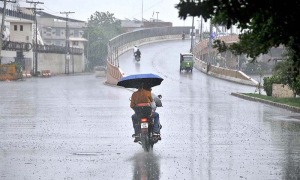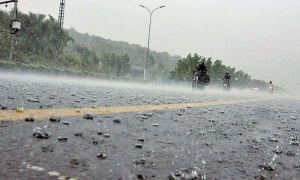Monitoring Desk
ISLAMABAD: Researchers said Wednesday that planting more trees in urban areas to decrease summertime temperatures could reduce deaths directly linked to hot weather and heatwaves by a third.
Modelling found that increasing tree cover to 30 percent can reduce 0.4 degrees Celsius (0.7 degrees Fahrenheit) locally during hot summer months on average, they reported in The Lancet. The findings said that one-third could have been prevented of the 6,700 premature deaths associated with higher temperatures during 2015 in 93 European cities. Currently, just under 15 percent of urban environments in Europe are covered by some foliage.
Premature deaths could be prevented by tree cover
Tamar Iungman, a lead author and researcher at the Barcelona Institute for Global Health, said that the study is the first of its kind to project the number of premature deaths caused by higher temperatures in big cities that could be prevented by additional tree cover.
He stated, “We know that high temperatures in urban environments are connected with adverse health outcomes, such as premature death, cardiorespiratory failure, and hospital admission.
“Our objective is to inform local decision and policy-makers about the benefits of strategically integrating green infrastructure into urban planning to promote more resilient, healthy, and sustainable urban environments.”
Due to the so-called urban heat island effect, cities typically report warmer temperatures than the nearby suburbs or countryside. This extra heat is caused initially by the exhaust from air conditioning systems, a lack of vegetation, dark-hued asphalt, and building materials that trap warmth by absorbing it. Climate change has already increased the problem. In the previous year, Europe experienced its hottest summer on record and second warmest year.
Health benefits Heatwaves worldwide are seeing record-breaking peaks and have increased in recent decades. Today, more deaths are still linked to European cold conditions than in hot weather. But climate models project that heat-related deaths and illness will immensely burden health services within a decade.
As Europe faces more dramatic temperature swings brought on by climate change, Iungman added, “This is getting more critical.” Between June and August 2015, the researchers calculated mortality rates for people over 20 years old, accounting for 57 million inhabitants.
This data was analyzed concerning daily average city temperatures in two modeling scenarios. The temperature of a city with and without urban heat islands was examined in the first study. The second simulates a drop in temperature if the percentage of trees is raised to 30%.
Throughout the summer of 2015, cities experienced temperatures 1.5C higher on average than the surrounding countryside. Romania’s Cluj-Napoca had the most significant temperature differential, at 4.1C.
In all cities, 75% of people resided in locations where the temperature was at least one degree warmer, while 20% experienced temperatures at least two degrees higher. Southern and eastern Europe had the greatest temperature-relatedd mortality rates.
Earlier studies have indicated that green spaces can have more health benefits, such as dementia, poor mental health, and reducing cardiovascular disease, as well as improving the cognitive functioning of children and the elderly.


























